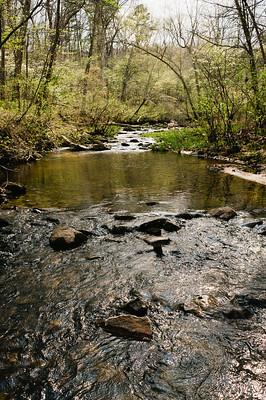
Water quality standards are the foundation for a wide range of programs under the federal Clean Water Act (CWA). The goal of Missouri's water quality standards is to protect the condition of Missouri's water bodies by applying water quality criteria. The Missouri Department of Natural Resources reviews and recommends updates, as appropriate, to these standards to ensure adequate protection to human health and the environment. For more information, visit Water Quality Standards Review.
A water quality standards variance is a temporary change in the designated water body use or water quality criteria for a specific pollutant. Variances allow a discharger to deviate from meeting a water quality-based effluent limit. Federal and state regulations allow the flexibility to adopt a variance based on one of the following factors:
- Naturally occurring pollutant levels
- Natural, short-term, intermittent/ irregular or low-flow conditions
- Human-caused conditions that cannot be corrected or would cause more environmental damage to correct than to leave in place
- Dams, diversions or other hydrologic modifications
- Physical conditions related to natural features prevent aquatic life uses
- Controls more stringent than needed to meet technology-based limits cause substantial and widespread economic and social impact
- Actions needed to facilitate lake, wetland or stream restoration through dam removal or other significant reconfiguration activities prevent attaining the designated use and criterion while the actions are being implemented
A variance must meet the federal requirements in Code of Federal Regulations 40 C.F.R. § 131.14 and state requirements in Code of State Regulations 10 CSR 20-7.031(12). A variance serves as the applicable water quality criteria in National Pollution Discharge Elimination System (NPDES) permits or when issuing Clean Water Act Section 401 Water Quality Certifications. Current water quality must not be adversely affected during the term of the variance.
